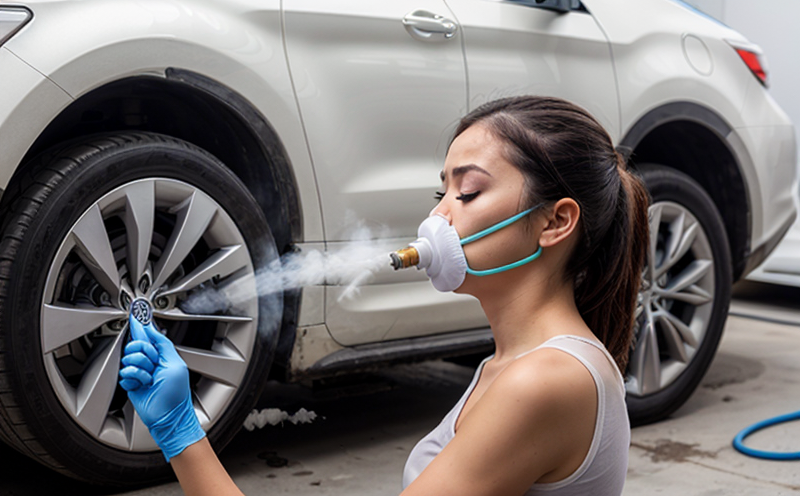EPA 6010 Metal Emission Testing by ICP OES
The Environmental Protection Agency's (EPA) Method 6010 is a critical standard for quantifying metal emissions in air, particularly relevant to industries involved with manufacturing, smelting, and processing activities. This method is designed to assess the accuracy of emission estimates from stationary sources using continuous monitoring equipment.
The Inductively Coupled Plasma Optical Emission Spectroscopy (ICP-OES) technique plays a pivotal role in EPA 6010 testing by providing precise quantification of metal emissions. ICP-OES is renowned for its high sensitivity, accuracy, and rapid analysis capabilities. This method involves the atomization of samples into an ionized plasma, followed by optical emission spectroscopy to determine elemental concentrations.
During the testing process, air samples are collected using appropriate sampling methods and prepared in accordance with EPA 6010 guidelines. The specimen preparation typically includes filtering particulates from the air sample and dissolving them in a suitable acid matrix for analysis. Once prepared, these solutions undergo ICP-OES analysis to measure metal concentrations.
The primary metals targeted by this method include aluminum (Al), antimony (Sb), arsenic (As), beryllium (Be), cadmium (Cd), chromium (Cr), copper (Cu), lead (Pb), mercury (Hg), molybdenum (Mo), nickel (Ni), selenium (Se), silver (Ag), tin (Sn), vanadium (V), and zinc (Zn). The accuracy of these measurements is paramount for compliance with environmental regulations.
The testing process involves a series of steps to ensure the reliability and precision of results. Initial sample collection is followed by rigorous quality control measures, including calibration checks and blank runs. These controls help minimize matrix effects and potential interferences that could affect the accuracy of metal concentration determinations.
Upon completion of analysis, detailed reports are generated summarizing the results of each metal detected in the air samples. The report includes raw data, calculated concentrations, and comparisons to regulatory limits specified by EPA regulations. This comprehensive approach ensures that clients receive clear insights into their emission levels and compliance status.
The importance of accurate and reliable testing cannot be overstated, especially given the stringent environmental standards imposed on industries with significant metal emissions. By adhering to EPA 6010 requirements and using ICP-OES technology, organizations can ensure they are meeting regulatory obligations while also contributing to cleaner air environments.
Why It Matters
EPA 6010 Metal Emission Testing by ICP OES is essential for industries that produce or use metals as raw materials. Accurate emission testing helps these organizations meet stringent environmental regulations and maintain good standing with regulatory bodies such as the EPA.
- Environmental Compliance: Ensuring compliance with EPA regulations on metal emissions can prevent penalties and legal issues.
- Risk Management: Identifying metal emissions early allows companies to mitigate risks associated with non-compliance.
- Sustainability: Reducing metal emissions helps protect the environment and supports sustainable practices.
- Reputation: Demonstrating a commitment to environmental responsibility can enhance an organization's reputation among stakeholders.
The results of EPA 6010 testing provide valuable data that can inform process improvements, equipment upgrades, and operational adjustments aimed at reducing metal emissions. This proactive approach not only promotes sustainability but also enhances the overall efficiency and effectiveness of industrial operations.
Applied Standards
EPA Method 6010 is specifically designed to align with the requirements set forth by the Environmental Protection Agency for monitoring metal emissions in air. This method is widely recognized and applied across various sectors, including manufacturing, mining, and chemical processing.
The ICP-OES technique employed in EPA 6010 testing adheres strictly to ISO standards, particularly ISO/IEC 17025 for laboratory accreditation. These standards ensure that the testing process is conducted with high precision and reliability.
For specific metal emissions, additional reference can be made to ASTM D3697, which provides guidance on sampling techniques for air emission monitoring, and EN 482, which covers aspects of sampling and analysis related to industrial emissions. These standards further reinforce the accuracy and consistency of testing results.
Compliance with these applied standards is crucial for generating credible data that can be used in regulatory reporting and decision-making processes. By adhering to these internationally recognized standards, laboratories ensure their methods are robust and reliable.





